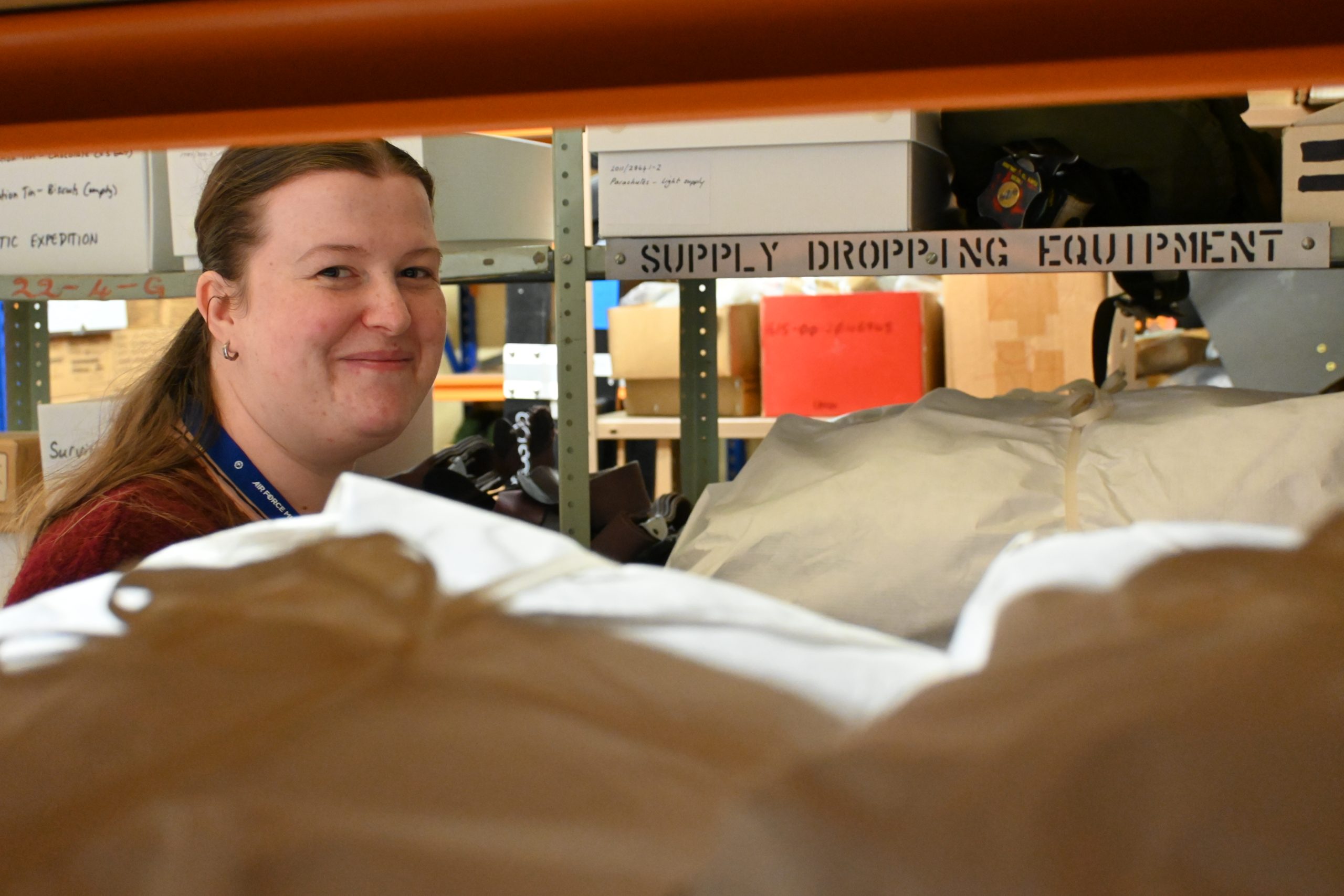Written by Danielle Ellis, who will be working with the Air Force Museum as its Safety and Surface Project Collections Technician for a wee while – We’re very lucky!
The word museum comes from the Greek mouseion meaning “seat of the Muses”, who were traditionally the nine daughters of Zeus and Mnemosyne, representing things like the arts, literature and history. A mouseion was a place for contemplation and philosophy, following these themes. Over time, mouseion has morphed into museum, and refers to reliquaries of antiquities and other historically important items.
In our case, that’s no different.
We hold things of importance to the history of the Royal New Zealand Air Force, which includes a lot of things you would expect, like aircraft, parachutes, and uniforms, but also probably a lot of things that might not even cross your mind. However, history doesn’t stop happening, and things don’t stop being important, so that means museum collections — ours included — are always growing.
The finite space of a collections storage building somehow always seems to be able to fit a few extra things in, like the shelves were built by Mary Poppins, herself. What that means is that sometimes items can get accessioned (or added) into the collection with little consideration for proper cataloguing, until someone like me comes along to roll up their sleeves and dig into the actually-not-so-cavernous shelving to pull out things covered in dust and grime and other sometimes hazardous substances.
However, just because it’s a little musty and sometimes a bit gross to touch doesn’t mean it doesn’t deserve the same care and attention as the most lovingly preserved, like-the-day-it-was-made piece of trench art in the museum.
Like our safety and surface collection.
In this collection are things you would expect, like parachute packs and canopies, dinghies, and survival kits. There are also things like ejection seat cushions, seat belts, and harnesses from Tiger Moths and Sopwith Pups, and release buckles. Then there are things like parachute cord that seems to have appeared out of thin air, a plastic bag of rusty screws and harness plates, and a box of 73 identical elastics.
Recently the Museum put out a post saying how a grant had been received to fund a project relating to this area of the collection, and hire someone with the sole purpose of properly cataloguing what safety and surface things we have — and here I am. I worked briefly as the Archives Technician last year as maternity cover, so I’m familiar with the Museum’s collections and processes already, which was probably the key hiring point, rather than my sparking personality.
Over the next year or so that I’ll be at the Museum, my priority is going through what’s already accessioned and fleshing out its record in the catalogue with all its information and fresh photographs (and maybe a bit of research, if required), occasionally gearing up to clean things that are a bit nasty, and making sure everything is nicely tucked into the shelves in a bed of archival packaging. And once I’ve done that, I start on everything that’s not accessioned — and that’s a lot of things. The majority, in fact.
While I’m doing all that, I’ve also been tasked to write blogs as I progress through this fairly sizeable undertaking. Over the next year, I’ll be sharing interesting things I come across in the safety and surface collection, and maybe a few insights about the process of how an item comes to be in the Museum’s collection and makes its way to collection technicians like me. For now, my first item has been picked, the blog has been written, and (excuse the pun) is waiting in the wings to be posted, so stay tuned for that — and probably a parachute or four afterwards.




